The jeweler Harry Winston once famously stated, “People will stare. Make it worth their while.” Few events embody his advice as reliably as our own Met Gala. Stare we will. Yet for many people, despite the visibility of the occasional high-profile event or a magazine photograph of a model in haute couture strutting down the runway at Paris Fashion Week, the art and industry of fashion remain enigmatic. For these folks, some basic questions—why, for whom, at what cost, and can you walk in that, among others—remain perplexing.

Rihanna poses for the photographers wearing a couture gown by Guo Pei on the red carpet of the 2015 Met Gala celebrating the exhibition China: Through the Looking Glass. Photo by BFA.com
I am, admittedly, one of these people. Perhaps that’s why I find Watson Library’s collection of electronic resources on costume and fashion to be so interesting. Even when I may not know exactly which books from the stacks to start with, these resources provide an easily accessible and browsable entry point and are a rich source of sartorial information. These multimedia resources, which provide essential support to The Met’s subject specialists and curators, are also accessible to library visitors from inside the Museum. They shine a light on the cultural, historical, aesthetic, and financial complexity of fashion. E-resources may even provide certain advantages over print materials in this area in terms of their ease of use and the ability to explore and manipulate high-quality images and videos which can enrich understandings of movement, light, color, and duration.
To access a list of electronic resources of special relevance to fashion studies in Watsonline, browse the e-resources by subject. From the Watsonline homepage, click “E-Resources” below the search bar to arrive at a list of e-resource subject headings, labelled “Browse E-Resources by Subject.” One of the bulleted headings in this list is “Costume and Fashion.”

From the Watsonline homepage, click “E-Resources.” Then, select “Costume and Fashion” from the list of subjects to retrieve a list of electronic resources of particular relevance to fashion.
Several of the resources with this subject heading are published by Bloomsbury, a leading UK-based independent publisher whose digital offerings excel in the humanities, arts, and social sciences. Bloomsbury fashion e-resources include Berg Fashion Library, Fashion Photography Archive, and Fashion Video Archive. Berg Fashion Library and Fashion Photography Archive are currently integrated and accessible from the same search interface, called Bloomsbury Fashion Central. Fashion Video Archive is to be incorporated onto the same platform in December of this year, but is separate for the time being.
The Berg Fashion Library is a multifaceted tool for the study of fashion from pre-history to the present which allows users to search across important reference sources, electronic books, an exhibition archive, a museum directory, and an image repository. Its reference resources include the Berg Encyclopedia of World Dress and Fashion, A-Z of Fashion (published in print as The Berg Companion to Fashion), The Dictionary of Fashion History, and Classic and Modern Writings on Fashion (the content of which previously appeared in Fashion: Critical and Primary Sources). Unlike its print counterpart, the Berg Encyclopedia of World Dress and Fashion—a ten-volume set of entries on the art and anthropology of costume and dress—includes color images. The volumes are organized by geographic region. Articles highlight particular themes, cultural groups, and dress types, and include discussions of topics such as the ornamental and symbolic meaning of body decoration, the historical significance of textiles, and trading relationships and migrations. Entries include references for further reading and related images, text, and video.
Berg Fashion Library’s component reference sources are integrated with and cross-reference several directories and repositories. The museum directory, for instance, tracks museums with major fashion collections; each entry includes a description and history of the collection, its particular strengths and specializations, photographs of objects in their collections, and contact information. Berg Fashion Library also contains an archive of important exhibitions on fashion; each entry describes the exhibition subject matter, content, and organization. Exhibits include Black Fashion Designers at the Museum at FIT (2017) and Killer Heels: The Art of the High-Heeled Shoe at the Brooklyn Museum (2014 to 2015). Over seventeen thousand images of clothing and accessories are accompanied with data on the source museum or collection, date and place of production, materials, measurements, reference numbers, and donors. Images are tagged with links to related content and to the websites for the collections from which the items are sourced.
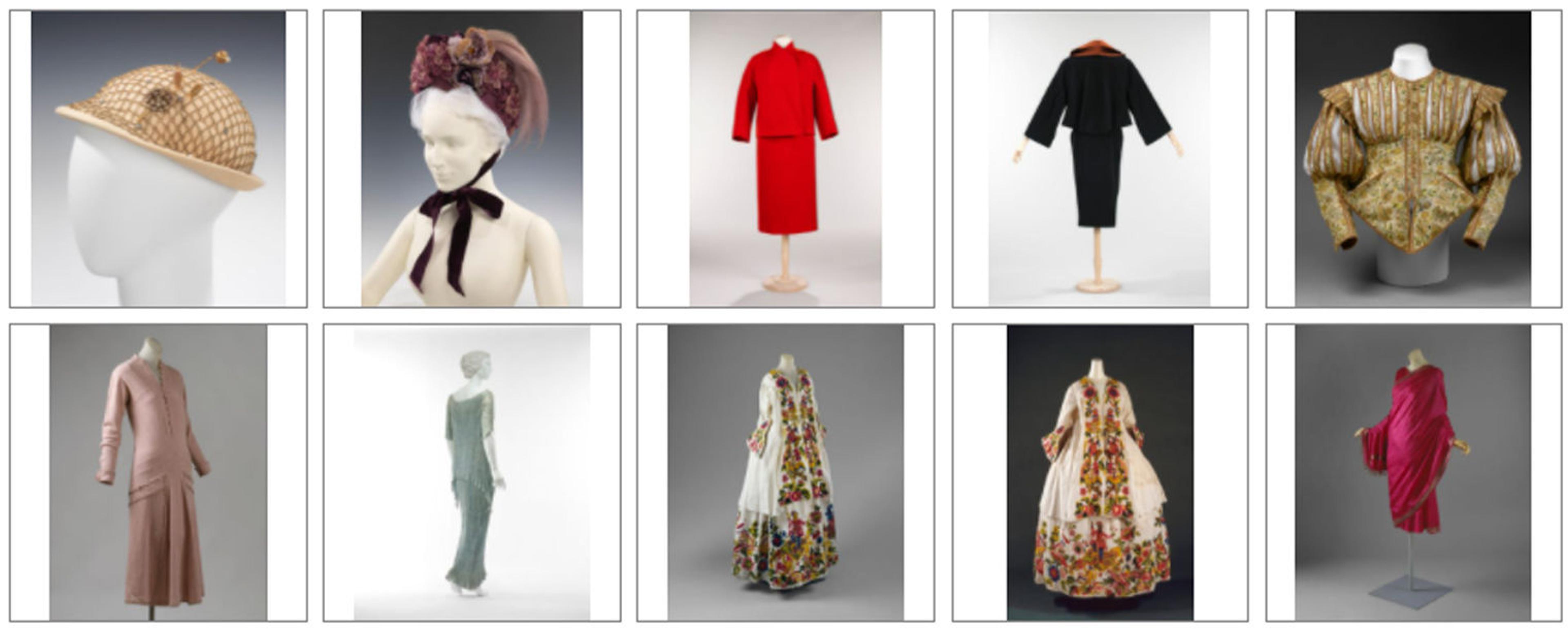
Objects from The Met collection as displayed in Berg Fashion Library’s museum directory. Screenshot by the author
Berg Fashion Library also includes more than 190 electronic books which explore fashion topics in greater depth. Timelines provide a graphic interface by which to browse content chronologically.
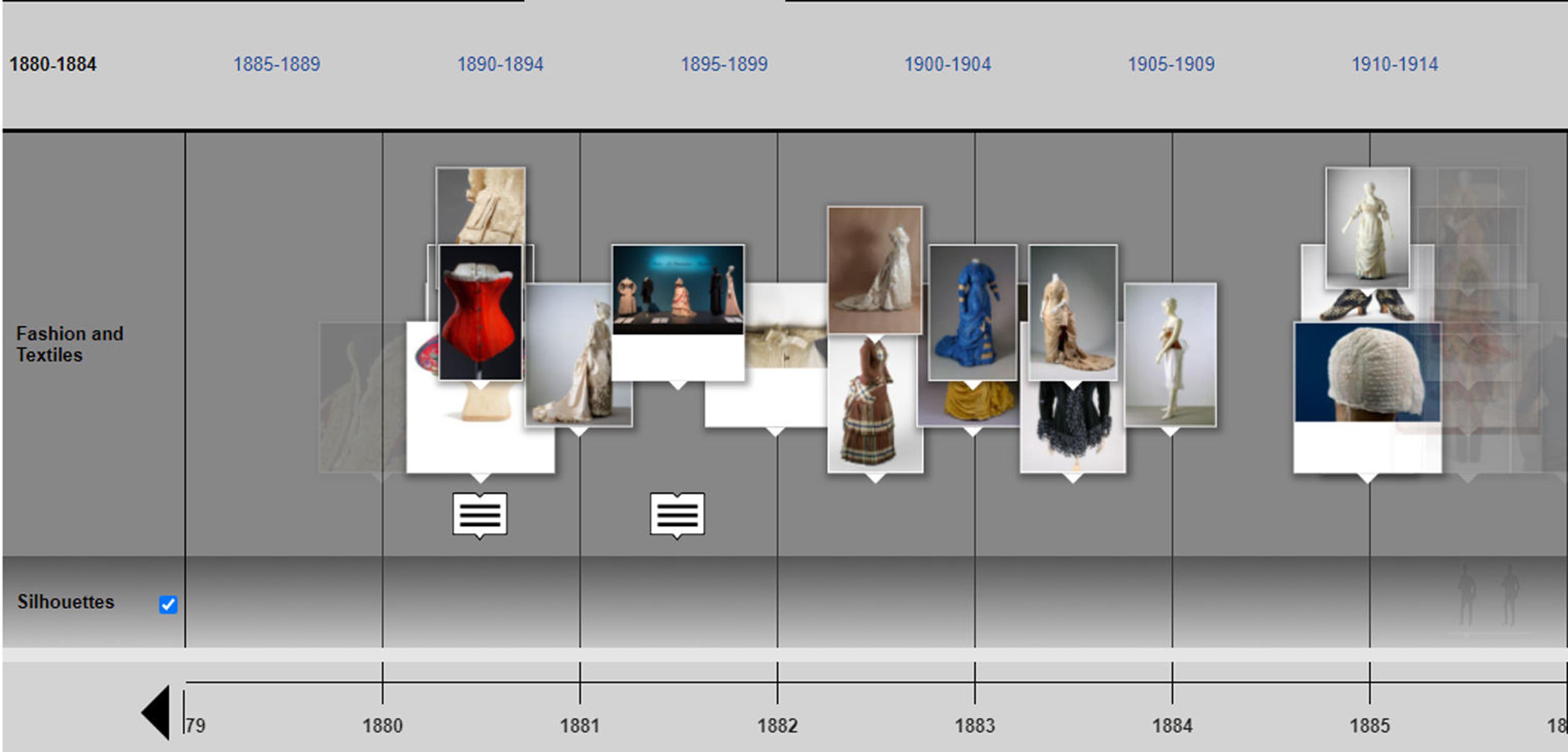
Berg Fashion Library’s timeline interface. Screenshot by the author
All of these resources together make up the Berg Fashion Library database, but Bloomsbury also provides access to the Fashion Photography Archive. This resource is comprised of over 775,000 images—runway, backstage, and street photography—captured by fashion photographer Niall McInerney. Images are supplemented with articles, more than one hundred biographies, and video interviews with McInerney. The Fashion Photography Archive is accessible from the same homepage as Berg Fashion Library, and its contents are integrated into the Berg Fashion Library search results.
One additional database from Bloomsbury, called Fashion Video Archive, exists on its own platform. This resource provides access to Italian online fashion retailer YOOX Net-a-Porter Group’s Runway Archive Collections, with videos of full runway shows staged in Paris, Milan, London, and New York from 1979 to 2003. It features iconic and theatrical shows like Alexander McQueen’s Spring/Summer 2001 “Voss” collection, in which models walked a runway housed inside a box constructed from mirrors while the audience looked on from the exterior. Perhaps more crucially, the archive contains many recordings of lesser-known shows.

Fashion Video Archive video display for Issey Miyake’s Spring/Summer 1999 show. Screenshot by the author
The videos are accompanied by short articles which highlight key collections, styles, and people. As with Berg Fashion Library, timelines allow users to browse content presented in chronological order.
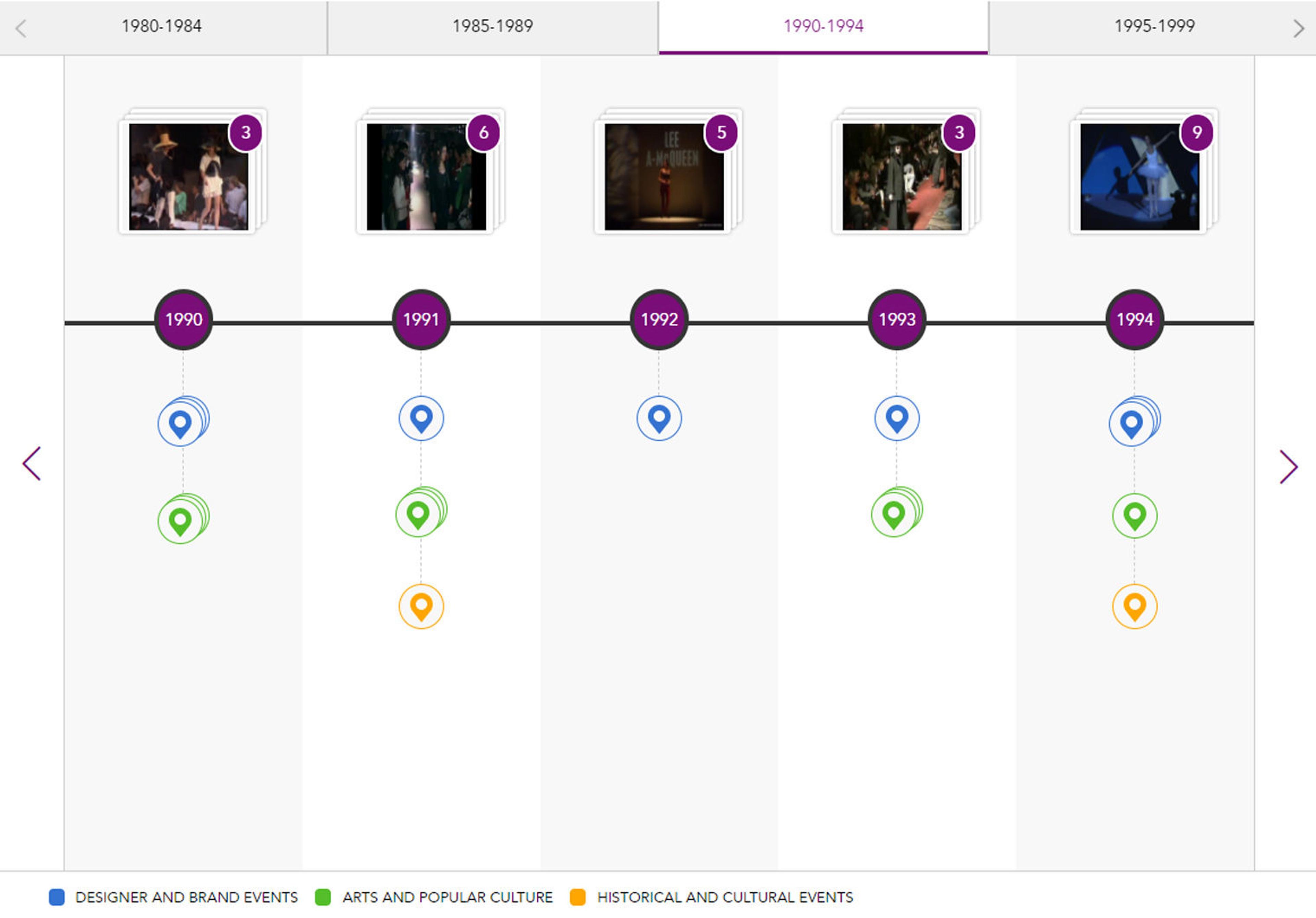
Fashion Video Archive’s timeline display. Screenshot by the author
To see a sample selection of videos within the database, run a title search for “Bloomsbury Fashion Video Archives” in Watsonline. The results represent only a small portion of the recordings available from the database; the publisher has not, at present, created MARC records for all of the videos on the platform, so that many of the recordings cannot be retrieved directly in this way. In order to access the full catalog of videos, first navigate from to the Fashion Video Archive from Watsonline and then browse or retrieve the desired content from within the database.
Fashion magazines and trade journals constitute another key group of sources for costume and clothing research. They play an important role in documenting and influencing trends, and provide important social, cultural, artistic, political, and economic context.
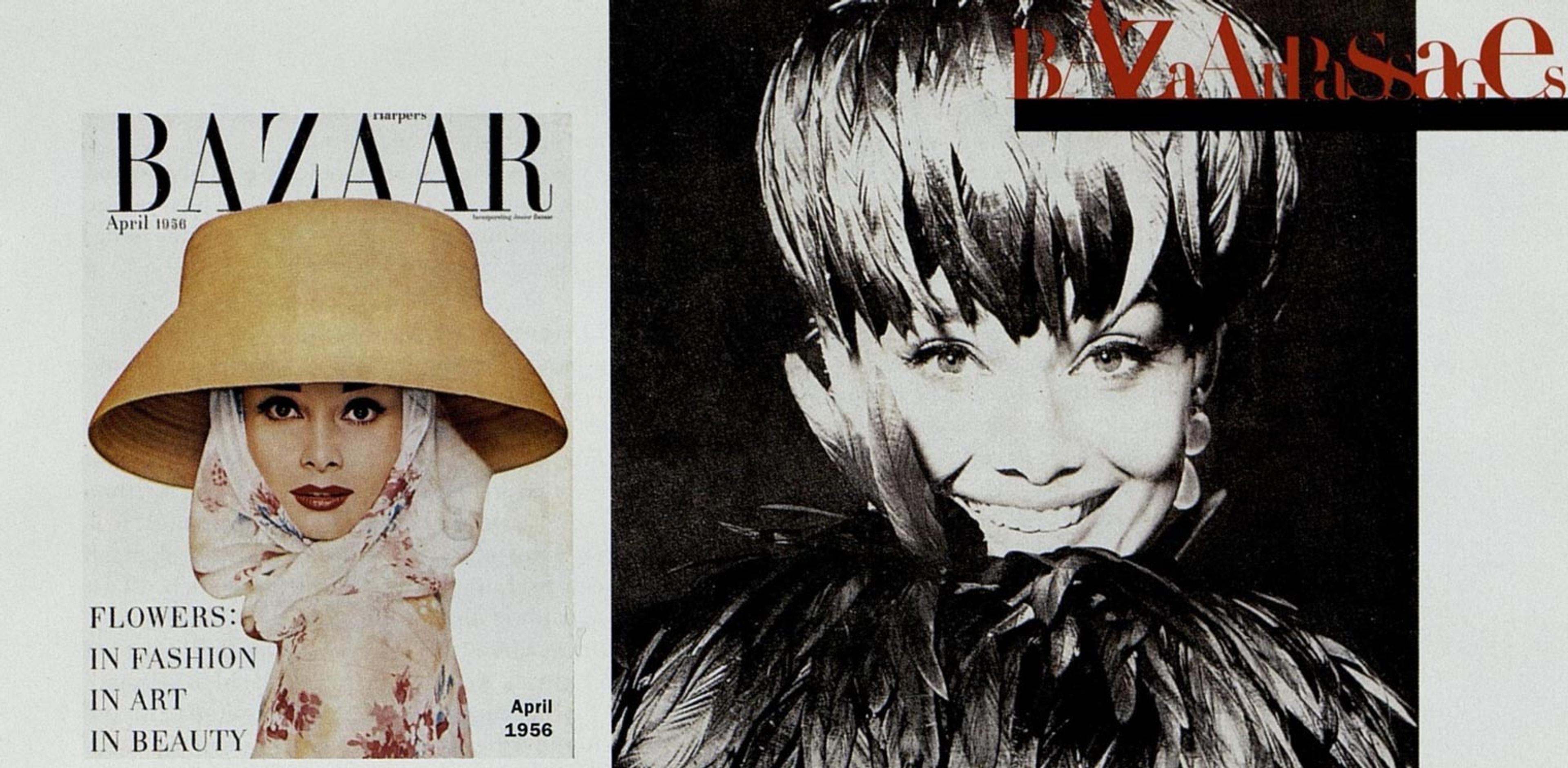
Cohen, Meg. "Unforgettable Audrey: ‘Bazaar’ Remembers Audrey Hepburn, the ‘Funny Face’ who Stole America‘s Heart." Bazaar Passages. Harper‘s Bazaar, April 1993. The Harper‘s Bazaar Archive.
Through the content-provider ProQuest, Watson Library maintains access to the archives of Women’s Wear Daily, the American and Italian editions of Vogue, and the American and British editions of Harper’s Bazaar. The functionalities and features across these archives are largely the same. Detailed image indexing allows users to apply complex filters to search results; in the Vogue archive, for instance, researchers can explore images by particular designer, brand name, or garment type.

Winakor, Bess. “The Wigs: The Wigged Woman,” Women’s Wear Daily, July 16, 1971. The Women’s Wear Daily Archive.
These magazines and journals evidence complex and difficult social histories. The July 2008 “Black issue” of Vogue Italia, which featured only Black models, was one of its most successful, selling out in the United States and the United Kingdom within seventy-two hours. The advertisements did not center Black models, however, so that even the “Black issue” appears predominantly white. Astoundingly, the United States edition of Vogue did not employ a Black photographer to shoot one of its covers until Tyler Mitchell photographed the September 2018 cover which featured Beyoncé.
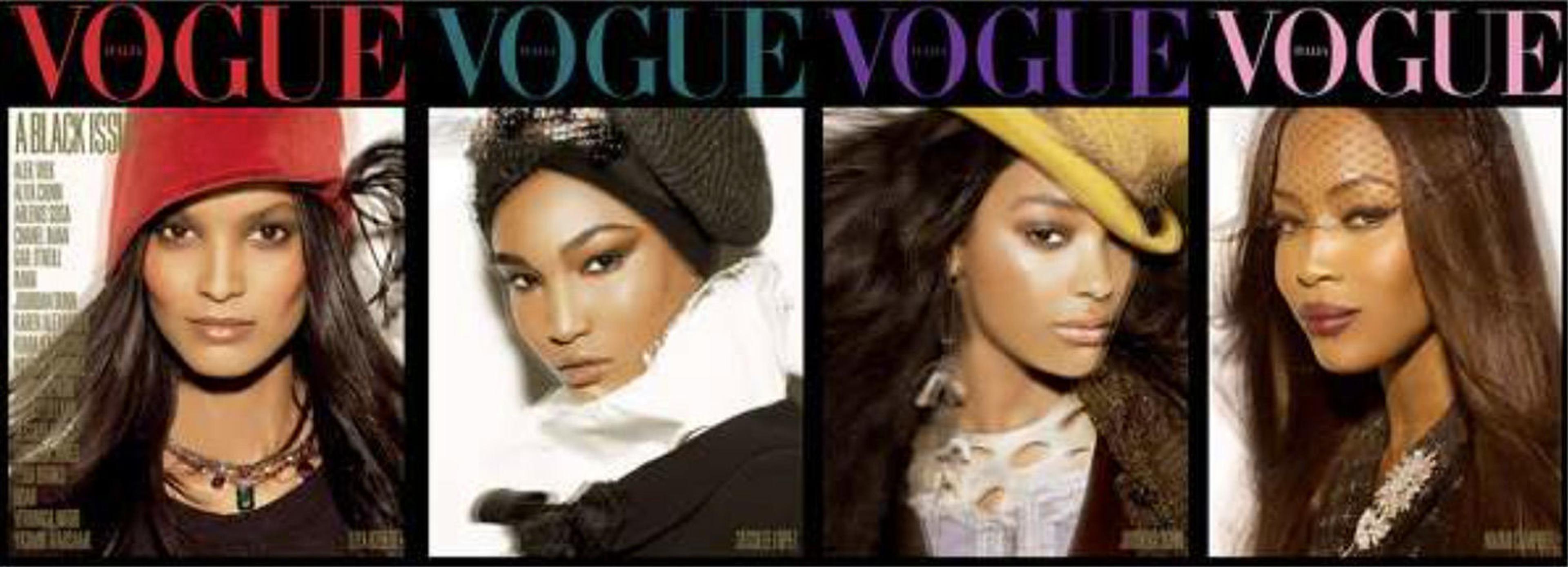
Naomi Campbell, Jourdan Dunn, Sessilee Lopez, and Liya Kebede were featured on the covers for the July 2008 issue of Vogue Italia. Photography by Steven Meisel. The Vogue Italia Archive.
You can search each of these magazines on its own, or all together. To explore all of them at once, visit the general ProQuest platform where you can search across all databases provided by ProQuest to which the library subscribes. To limit your search only to the fashion magazines, click “Databases” above the search bar, as shown in the screenshot below. Then check off the names of the publications you would like to search among and press “Use Selected Databases.”

Screenshot by author
We may not all get to go to the Met Gala, but we all get dressed. Fashion is for all, and we hope that our electronic resources can help make its rich history, materials, designs, and significance accessible to all.
Special thanks to Julie Lê, Associate Museum Librarian for The Irene Lewisohn Costume Reference Library, for her assistance with this post.
